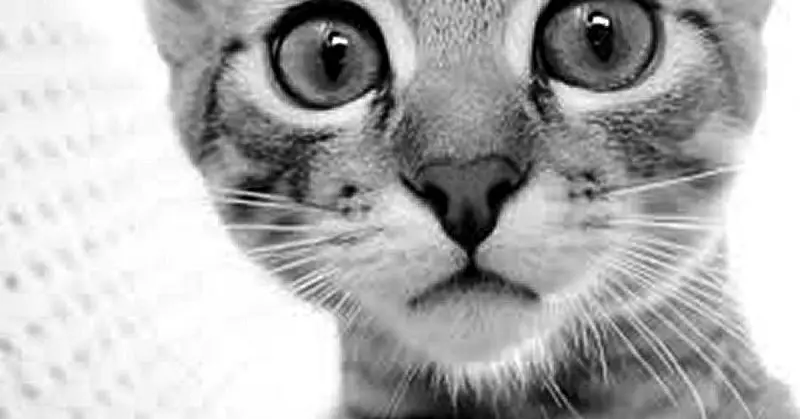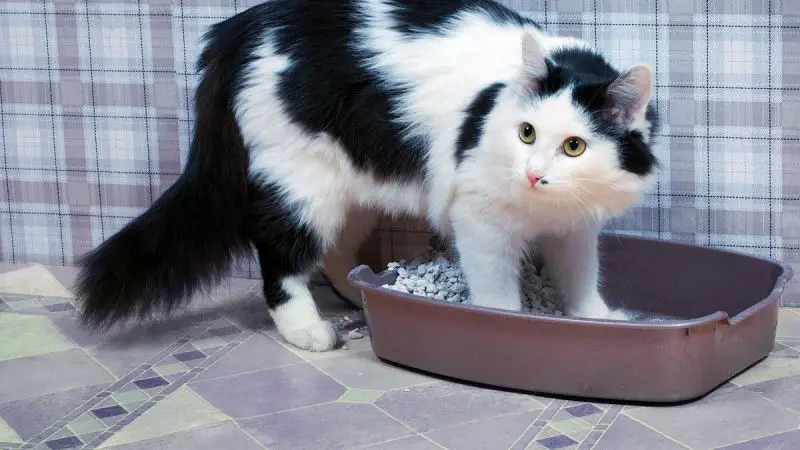
Is my cat sick? This is an all too common question asked by many cat owners. It can sometimes be quite tricky to detect an illness in a cat, simply because they can’t tell us what’s wrong verbally.

Also, cats have kept their ability to hide signs so well, that an illness (or weakness in their body) can sometimes go unnoticed. Why? Just think about an animal that acts sick in the wild, it becomes an obvious prey and will inevitably get eaten. Cats have over 95% of their DNA identical to a Siberian Tiger so this innate ‘protective behavior’ is instinctive to them.
There may be visible and obvious signs of sickness in your cat such as blood in their urine, stool or vomit. Blood in the urine can indicate a urinary tract disorder, especially if accompanied by straining while trying to urinate or if you notice increased visits to the litter box. Blood in the stool can indicate a variety of illnesses, some relatively minor, but others, like certain parasitic infections, can be more serious.
Buy Cat Litter & Accessories Today – Shop over 1,000 Brands at Chewy!
In regards to vomiting, if a cat vomits up the occasional hairball that is probably normal. If they vomit several times a day or they vomit blood, get them to the vet immediately. Vomiting blood, however, is always a sign of a serious illness.
Another obvious symptom is diarrhea which can result in dehydration, and if untreated can be fatal. Diarrhea is caused when too much water is expelled with the stool, thus creating a loose or watery stool. On the other hand, constipation occurs when your cat produces small, hard, and infrequent stools. A cat typically defecates once or twice a day. Constipation is most often caused by hairballs, and should not be ignored as it can lead to weight loss and anorexia.

As a rule, we recommend that cat owners take their pets to the vet at least once a year for a check-up, and if the cat is a senior (over 7 years old) or has known health issues, your vet may recommend more frequent visits.
Our focus in this article is helping you identify the less obvious signs of illness that are more subtle and too often missed by the owners. The good news is that our cats do provide us with clues to a possible health issue by their behavior and mannerisms. If you can quickly recognize certain signs and symptoms, then you’ll be able to detect potential issues early, and positively influence the health and happiness of your feline friend.
Let’s go over 8 common signs of illness in cats.
Sign #1: A Change in Appetite or Thirst
If a cat refuses to eat or drink, this often means the cat is in pain or is otherwise feeling poorly.
Contrary to popular belief, most cats are not finicky eaters.

Watch for changes, such as an increase or decrease, in a cat’s food intake. Eating too much or too little can potentially signify disease. For example, eating less than usual can signify an internal illness or possibly even a dental problem. On the other hand, an increased appetite might suggest testing for diabetes or hyperthyroidism. We’ve recently written a post to highlight 9 common household foods which are toxic to your cat and can cause symptoms of illness. Find it here: Foods Your Cat Should Never Eat
If a cat has increased thirst, especially when accompanied by increased urination, this can point to issues like diabetes or kidney disease.
Sign #2: Going Outside the Litter Box
If your cat has always been perfect about using the litter box, and then suddenly starts making a mess outside the box or around the house, there’s a problem. This annoying habit can be behavioral or might indicate a disease. Be sure to keep the litter box clean, as cats won’t use a dirty litter box any more than a human would use a dirty toilet.

The more worrisome health concerns that can cause litter box issues include kidney disease, urinary tract infections, and bladder stones.
If your cat appears to be straining to pee or defecate, get them to the vet immediately. If the cat is trying to go to the bathroom and not producing anything, they could have a blockage somewhere, which could be fatal if left untreated. This is especially true if the cat also seems to be in pain, like crying out while trying to go to the bathroom.
If the issue appears to be behavioral, we do recommend a product called Cat Spray No More.
Sign #3: Unexplained Weight Loss or Gain
If your cat is losing or gaining weight for no obvious reason, it’s a good idea to take them to the vet, especially if the weight change seems sudden. Weight gain or weight loss can indicate a thyroid condition in your cat, however the cause can be as severe as cancer.

In older cats some weight loss is normal as they lose muscle mass, but a significant loss can point to something serious. To put things into perspective, a cat gaining or losing a single pound is roughly comparable to a human gaining or losing 10 pounds.
Marked weight gain can result in obesity, which can lead to arthritis, tumors and a shorter lifespan. An obese cat can develop many of the same health problems that an obese human will, like diabetes or heart disease.
Sign #4: Change in Normal Behavior
Sudden changes in behavior can indicate trouble in a sick cat. A classic sign is noticing if your normally social cat starts hiding or acting unusually aloof. Many cats when not feeling well, will avoid contact with anyone around them.

For example, if a normally outgoing cat suddenly starts hiding all the time, this may mean that they are sick or in pain. Similarly, if a cat is in pain, it may instead become aggressive, especially if you accidentally touch them in a sore spot.
A sudden increase in activity level in a middle age to older cat can indicate an overactive thyroid. On the other hand, if your cat seems less than enthusiastic about moving around or playing, it may indicate arthritis or other issues. A red flag to watch for is a change in the cat’s mobility or daily routine.
Sign #5: Changes in Grooming Habits
If you notice a difference in your cats’ coat, such as it is duller than normal or perhaps even greasy. A fastidious groomer who suddenly stops grooming, even just a bit, is often a sign of a potential illness such as a skin disease.

On the other hand, a cat that unexpectedly starts over-grooming, could be indicative of pain, allergies or even stress. Cats that over-groom can end up with bald patches and the underlying cause could be skin parasites, like fleas or mange.
Sign #6: Changes in Sleep Patterns
Cats sleep a lot. In fact, about 2/3 of their lives. But they do develop a consistent routine of napping when they feel well. Watch for changes in this normal napping routine.

For example, if your cat seems to sleep all day when she used to be active, she might be trying to tell you she isn’t feeling well.
The opposite is also true. If your cat is up all night roaming the house, vocalizing, or seems overactive during the day, there might be an underlying issue such as pain and/or illness, perhaps even associated with aging.
Sign #7: Stinky Breath
Cats are not known for having lovely breathe, however if your cat has overly stinky breath this could be a sign of gum disease or tooth decay. Stinky breath can indicate that something may be rotten in the mouth, or perhaps an underlying internal issue such as kidney disease or a digestive disorder.

Brushing your cat’s teeth is a good way to decrease those risks. Check out the extensive range of dental and cat healthcare products at Chewy.

Sign #8: Changes in Vocalization
Naturally quiet cats that start to become more vocal, or normally chatty cats who become much quieter can indicate potential illness.

Sometimes even the voice itself will change – much like when we get a cold. Possible explanations include hyperthyroidism, hypertension (high blood pressure) or even anxiety.
Summary
Keep an eye out for these 8 health cues in your cat and you’ll be well prepared to tackle any potential issues early on with your vet before they escalate. Here’s to your healthy and happy kitty!




